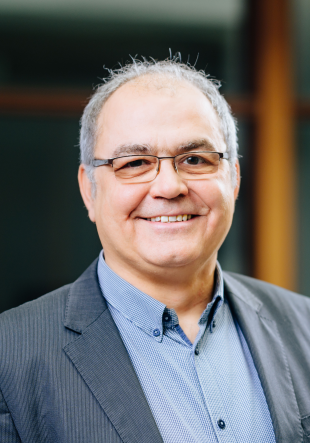For 2863 - Ultrawideband Sampling
Overview
The metrology of wireless communication has to properly represent the complex interaction of the digital and analog signal domains. The high bandwidth at THz frequencies allows for extreme radio frequency (RF) bandwidth and hence also very large baseband bandwidth. In the baseband the broadband analog signals are digitized by broadband analog-to-digital-converters (ADC). In an ADC the signal is first sampled and then the stream of analog samples is converted to a stream of digital data words. Typically it is the precision of the sampling which determines the precision of the ADC. The high bandwidths of the analog input signals require extreme fast samplers and insufficient sampler bandwidth will be a cause for signal degradation. Besides bandwidth, another major performance bottleneck of broadband samplers is aperture jitter rsp. clock jitter of the electronic clock. As an alternative, optical clocks based on pulse trains from mode-locked lasers (MLL) have demonstrated to achieve much smaller jitter than electronic clocks. This has led to the development of photonic samplers and ADCs using ultra-low-jitter optical clocks. So far most of the photonic sampling techniques use discrete optical devices and large, complex laboratory setups. Recently photonics integration technology such as indium phosphide technology and silicon photonics have made significant progress and allow to integrate photonic sampling circuits (except the MLL) in a similar way as electronic samplers. This will allow for mechanically stable, miniaturized, and cost-efficient photonic sampling devices. In the projct of METERACOM the groups from PIs Scheytt and Schneider will investigate different variants of ultra-broadband electronic and photonic sampling techniques with bandwidth up to 40 GHz as required for THz wireless communication and their suitability for integration. The three goals of B3 are: 1) to investigate different photonic sampling techniques for the sampling of THz waveforms both theoretically and experimentally, 2) to implement a novel ultra-broadband photonic sampling technique (frequency-time-coherent sampling) for the first time in a silicon photonic chip and 3) to model and compare electronic and photonic sampling techniques and find the ultra-broadband sampling technique which is best suited for integration. Investigations will be carried out by means of mathematical analysis, numerical modeling and simulation, as well as measurements of different sampling devices.
DFG Programme Research Units
Subproject of FOR 2863: Metrology for THz Communications
Key Facts
- Grant Number:
- 403579441
- Research profile area:
- Optoelektronik und Photonik
- Project type:
- Forschung
- Project duration:
- 08/2019 - 12/2023
- Funded by:
- Deutsche Forschungsgemeinschaft (DFG)
- Website:
-
DFG-Datenbank gepris


